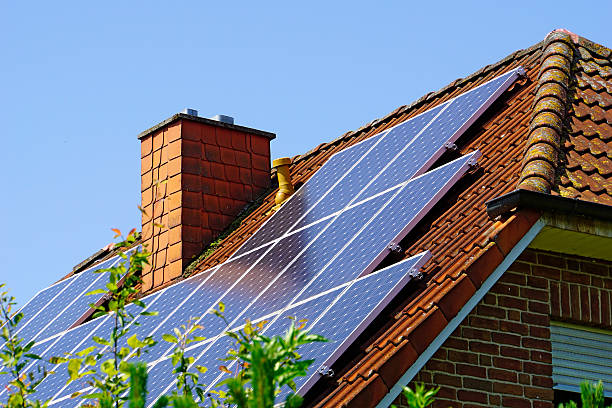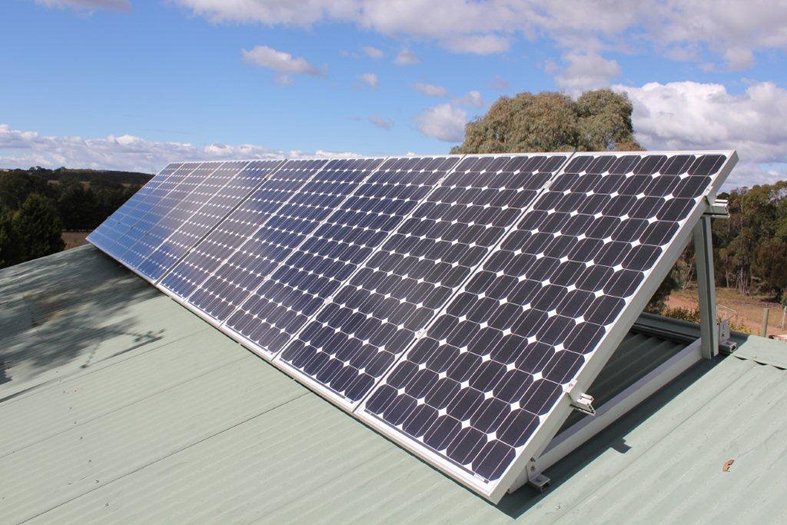Last update May 28th, 2024 at 10:45 am
If you are planning on going solar, there are many elements to consider. Luckily, your installer will know which solutions are the best for your household – including what direction to mount the solar panels.
Solar panels produce electrical power as sunlight hits the solar cells. Because of this, it is important to make sure that the sun hits the panels in an optimum way. Generally, it is recommended that the sunlight hits the panels at a 90-degree angle.
So, is it better to install the solar panels in a north, south, east or west-facing direction?
Here we will explain what the best direction for mounting solar panels is, based on your whereabouts!

The ideal direction to mount solar panels in different parts of Australia
As Australia is located in the southern hemisphere, the sunlight is mostly emitted from the north. Because of this, the optimal angle of the solar panels will be when they are facing towards the north.
In Australia, solar panels will usually be installed in a north-facing direction, as this will ensure the best energy output – especially for those who are at home and able to use the power as it is produced.
However, some prefer to install solar panels in a west-facing direction, as this will give the best solar energy output between 1:30 pm and sunset. This might be ideal for Australians that are out of the house during the morning hours, and home during the afternoon.
It is also possible to choose east-facing panels. These will produce more solar energy during the morning, as the sun rises in the east. South-facing panels are usually not considered, as this will result in the lowest energy production.
What is the optimum solar panel angle?
Besides the solar panel direction, it is important to consider the angle. The exact installation angle might differ somehow from place to place.
In most cases, the optimal solar panel angle is considered to be the same as the latitude angle of your location. Here is an overview showing you the optimum angle of the solar panels based on where you live:
- Hobart: 42.9 °
- Sydney: 33.9 °
- Adelaide: 34.9 °
- Darwin: 12.5 °
- Perth: 31.9 °
- Melbourne: 37.8 °
- Brisbane: 27.5 °
However, in most cases, the solar panels will be installed at the same angle as the top of your roof. Of course, this means that the installation angle will depend on the architecture of your particular home.
Mounting devices to adjust the solar panel orientation
It is possible to install solar panels at a different angle than your roof angle. This can be done by using mounting devices or similar. But in most cases this would have a significant impact on the costs, making it a less popular option.
Anyways, if your rooftop is flat, it might be necessary with a mounting device to ensure that the solar panels produce enough solar power.

How much will solar panel efficiency be affected by panel angle?
The solar output reflects how much electricity your solar panels will be able to produce. If your solar panels are installed in the optimum direction based on your location, you might expect a highly efficient solar panel system.
Of course, the solar output will also be affected by the system efficiency, shades and weather conditions. Here we are basing efficiency solely on the direction and the solar panel angle.
So, what happens if the solar panels are not installed in an optimum direction or angle? The answer is not as straightforward as you might think it is, as your location plays an important role.
Also remember that the flatter your roof is, the more significant the solar efficiency loss will be. If we assume that your rooftop is completely flat, this is the expected solar output (compared to the output under optimum conditions) in some Australian cities:
- Hobart: 82%
- Sydney: 87%
- Adelaide: 87%
- Darwin: 96%
- Perth: 86%
- Melbourne: 86%
- Brisbane: 90%
Let an installer help you
It might be tricky to know what is the best direction and angle to mount your solar panels. Luckily, you don’t need to worry about this at all, as an installer will perform the installation process.
By using a CEC-approved installer, you can feel confident that the solar panels will be mounted in the best possible direction based on where you live (and when you will use most of your electricity).
Also, remember that you will not be able to receive solar rebates if the installation is not done by a CEC-approved installer.
So, how to get started? Find an installer, and let them inspect your property to find the best possible solutions for you. You will then receive a price quote to get an overview of the expected costs.